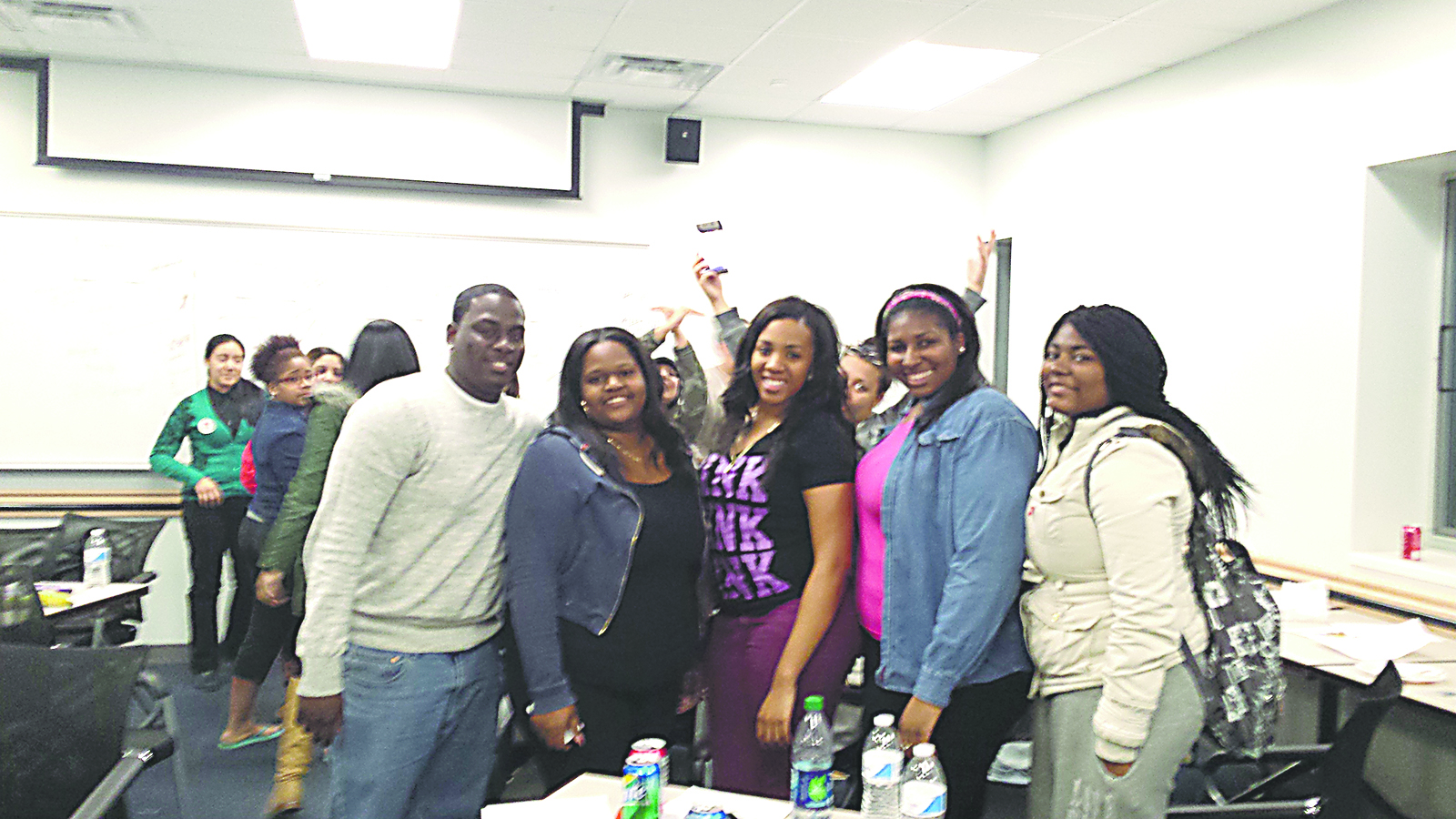By Keanu Austin
While this year’s Winter Olympics were held in Sochi, several Kean students organized and held a Condom Olympics event on Feb. 12.
“This is my second time doing it,” said Adriana Castro, a Bartlett Hall residence assistant. “I’m hosting it with my sorority.”
Castro, who belongs to Chi Upsilon Sigma National Latin Sorority, Inc., last held and organized the event in the previous school semester.
The Condom Olympics, which has become a common event at many universities, is designed to put a fun twist on teaching safe sex to students. The event’s origins can be traced back as far as 1988, when two groups at the University of Wisconsin-Madison sponsored their own Condom Olympics, according to The Milwaukee Journal.
Several games played at the 1988 Condom Olympics were designed to demonstrate the sturdiness of condoms, reported The New York Times. One such game was a condom-over-the-head contest, which had contestants pull inflated condoms over their own heads to see how far they could get without breaking the rubbers.Other featured games included a condom-themed water-balloon toss, relay race, volleyball tournament and demolition derby. In those games, competitors tossed, transported, swatted, and stomped out water-filled or inflated condoms.
Out of the approximate 150 participants present at the 1988 Condom Olympics, reported The New York Times, more than half were women. The turnout for Kean’s February Condom Olympics was similar in that more than half of at least 18 participants were female.
Kean’s Condom Olympics organizers separated participants into five teams: red, green, purple, orange and grey.
Organizers then kicked off the nightly event with a sex-themed bingo, which featured educational facts that explained things like British spies had used semen as invisible ink, the penalty for masturbation in Indonesia is decapitation and the average number of calories and sperm in a teaspoon of semen is seven and three hundred million respectively.
The second game tested participants’ knowledge on sexual terms. Teams had to define the terms coitus, cunnilingus, fellatio and analingus [sic]. The following step of the game had teams provide nicknames for each of those proper sexual terms. Participants provided nicknames like “shoot up the club” and “surfboard” for coitus, “eating out” for cunnilingus, “dome” for fellatio and “rusty trombone” for analingus [sic].
The third game of the night was Sex Jeopardy. Participants chose questions worth points between 100 and 500. The categories were prevention, STI, pregnancy, HIV/AIDS and miscellaneous.
The questions, which asked for information like the definition of consent, methods of birth control and the steps to turn a condom into a dental dam, rarely baffled the participants for long, if at all.
A bonus round was held in which a member from each team gathered around a desk occupied by bananas and boxes of condoms. The objective of the game was to see who could apply the most condoms to the most bananas the quickest.
Following the bonus round, the Condom Olympics had its victor: the green team, which consisted of Shaquanna Hutchinson, Joyella Roach, Keith Gardner, Delois Blackmon and Christina White. Their prize: condoms.
The practice of distributing condoms at Olympic Games has been in place since the 1988 Summer Olympics in Seoul, South Korea. Health officials, reported The Associated Press, were concerned that the expected 270,000 foreigners visiting for the Olympics would spread AIDs in South Korea.
This fear is not baseless, for one of the many things the Olympic Games are known for is the copious amount of sex and partying that it brings to Olympic Villages, which are made to house athletes, athletic trainers and officials.
Hope Solo, a two-time Olympic gold medalist, estimated this year that 70 to 75 percent of Olympians are having sex in their free time, according to The Huffington Post.
The Post also reported that officials of this year’s Olympic Games have handed out 100,000 condoms — just 50,000 less than the amount of free condoms handed out during the 2012 Games.
As far as contraception use for the sake of preventing pregnancy goes, the United States appears to be struggling when compared to other countries.
“The U.S. unintended pregnancy rate is significantly higher than the rate in many other developed countries,” states the Guttmacher Institute, an organization that focuses on sexual and reproductive health.
The organization, which defines an unintended pregnancy as one that is either mistimed or
unwanted, published a fact sheet at the end of 2013 that states 3.4 million of the 6.6 million pregnancies in the United States each year are unintended.
Only two-thirds of U.S. women at risk for unintended pregnancy use contraception consistently and correctly, the organization revealed, and those women account for only five percent of unintended pregnancies.
